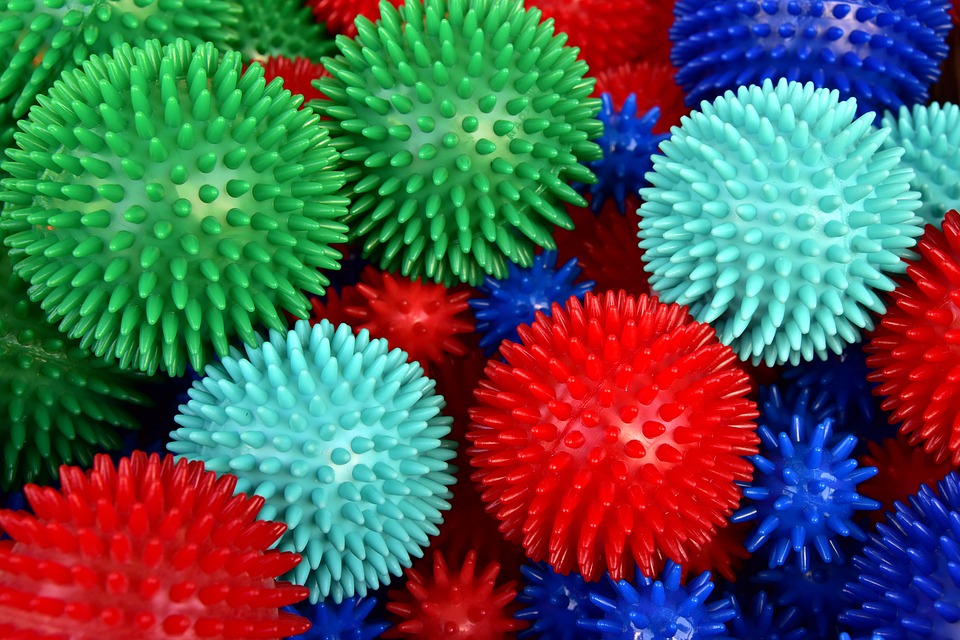Lots of people with axial SpA (AS) find massage relaxing and helpful for pain relief. There are lots of massage techniques you can do at home to help ease muscle tightness and unwind.
Safety
If you’re new to massage, check with your doctor or physiotherapist if this would be suitable for you. With axial SpA (AS), bones and muscles can be tender to touch, especially around the spine and ribs. Do not massage directly over bones. Some people do find massage triggers a flare; so always start gently with any new technique to ensure it’s comfortable.
Effects of massage
Massage can be very relaxing and therefore help with symptoms of stress and anxiety. It can also distract from pain during a flare when applied in the correct way.
Although the effects are not long lasting, massage can soothe muscles and ease joint stiffness.
Making massage more effective
To make the effect of massage last longer, you can use heat before, during or afterwards. Apply a heat pad or hot water bottle (wrapped in a towel) for ten minutes. Using stretches can also make the effects last longer.
Massage at home
Many people with axial SpA (AS) find it more comfortable and beneficial to do small amounts of massage more frequently, so these at home massage techniques can be very useful.
Massage should be applied to muscles, never massage over bones. If you’re unsure which areas to massage, ask your doctor or physiotherapist. Start with a very gentle pressure for a small amount of time and then see how you feel 24-48 hours afterwards. This allows you to see how your body responds and gradually increase the pressure depending on how you feel.
Areas it can be comfortable to massage include:
- The muscles that run from the side of your neck along into your shoulder (do not massage the front of the neck)
- The muscles either side of your spine
- Front of the shoulders into the chest (pectoral muscles)
- Arm and forearm muscles
- Palms of the hands
- Gluteal muscles of the hips and buttocks (avoid massaging directly over the bones of the pelvis and hip)
- Thigh and calf muscles
- Soles of the feet
Hands: You can use your fingertips or the heel of your hand to apply a very gentle pressure in small circular movements over the muscles.
Tennis ball (or spikey massage ball): You can hold a ball in your hand and place a downward pressure onto a muscle, then roll the ball in circular movements to massage the area.
To make this stronger, you can stand against a wall and lean onto the ball (or lie on the ball on the floor) to increase the pressure. Take care not to apply pressure in one area for too long.
Foam rollers: There are many foam rollers on the market, but the technique and effect is similar for each. Standing or lying, lean onto the roller and move your body to change the area of pressure.
Machines: Hand held massage machines can be helpful, but with axial SpA (AS) you must be cautious to not apply too much pressure.
Seeing a massage therapist
If you want to go to a massage therapist, firstly check with your doctor to ensure this is suitable for you. When finding a massage therapist, check that they are qualified and insured. They should also be familiar with axial SpA (AS) and you can explain the specific effects the condition has on you.
Depending on the type of massage and area being massaged, some massage therapists will ask you to undress partially. Make sure you’re comfortable and the therapist should use towels to cover you and keep you warm.
It can be helpful to try different positions lying or sitting to ensure you’re comfortable. Your massage therapist can use pillows to keep you comfortable, for example under your hips when lying on your front to reduce pressure on your low back.
Discuss the different types of pressure they can use and also start gently, then build up gradually over time. See how you feel 24-48 hours afterwards, because sometimes the effects of massage are delayed.
Summary
- Massage can be very helpful for relaxation, muscle tension and to make stretches more effective
- There are lots of ways you can massage at home
- It’s important to discuss your axial SpA (AS) with your massage therapist
Zoë Clark is an osteopath living with AS herself and has joined the NASS Helpline team to help with the unprecedented demand over COVID-19. You may have seen her blog posts previously written for NASS and she spoke at the latest parliamentary meeting in January and appeared on Channel 5 News. She’s joining the NASS team to help you keep active and feeling well during this difficult time of isolation.
Zoë is available on the Helpline each day, so if you’d like to have a chat then please get in touch and we can arrange a call. She’ll also be sharing some of her top tips and answering any common questions, so please let us know in the comments if there’s any particular advice you’d like.
The Helpline is open 1000-1600 Monday to Friday on 020 8741 1515 or you can email zoe@nass.co.uk



